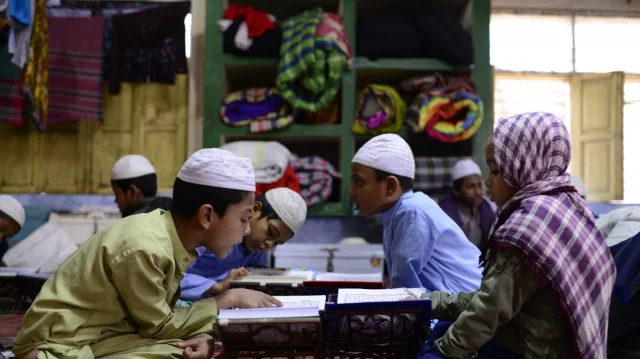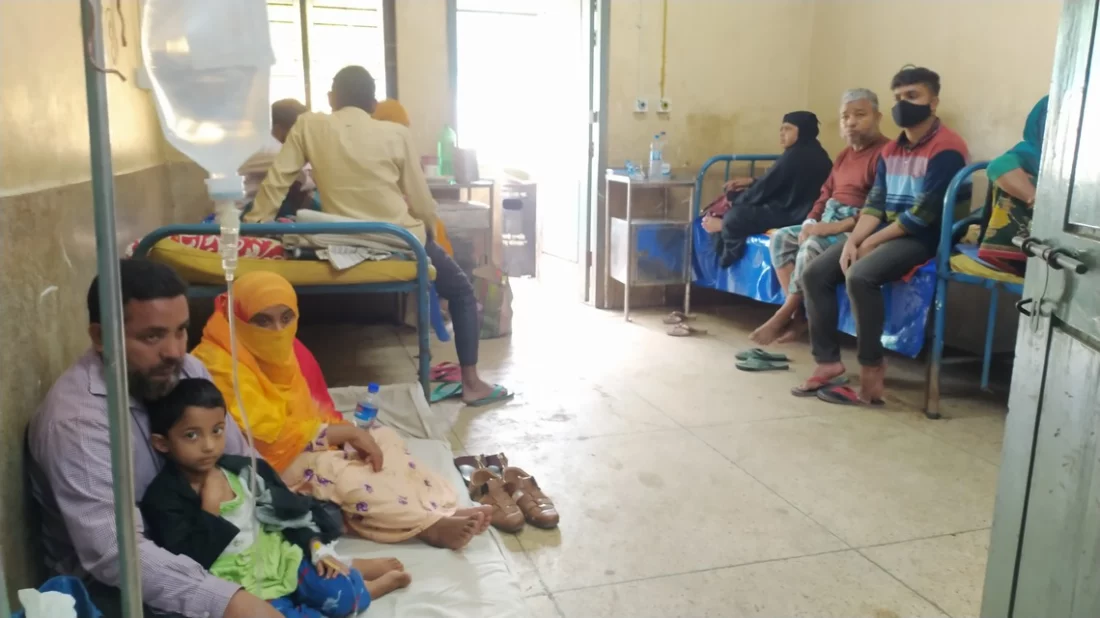Building a high performing education system has never been more important for Bangladesh

Education has made significant progress in recent years, but three key challenges remain.
Challenge 1: Curriculum relevance and quality. There are high repetition and drop-out rates, with an estimated 4.3 million children out of education with others in education achieving competitive educational outcomes (UN, 2020).
Challenge 2: Teacher quality. Children suffer a learning loss of around 40% due to poor quality education over eleven years of schooling (World Development Report, 2018).
Challenge 3: Resourcing. With education spending constrained at around 2% of GDP -- lower than comparative countries -- our infrastructure is dated and over-crowded (World Bank, 2022). Under-resourcing affects attendance. UNICEF estimates that a third of adolescent schoolgirls skip school several days each month on account of hygiene issues (UNICEF, 2023) and lack of appropriate support at school.
Building a high performing education system
The Organization for Economic Cooperation and Development (OECD) tracks the performance of education systems through student outcomes, specifically its Program for International Student Assessments (PISA). These tests measure the ability in reading, mathematics, and science of 15-year-old students. Topping the charts in recent years have been China, Singapore, Hong Kong, Canada, Estonia and Finland.
According to the OECD, such high performing systems share common characteristics. First, they focus on the future, not the present: They focus on skills, such as critical thinking, creativity, and collaboration. Second, they believe that all students can learn: It’s the task of schools to set high standards for all students, but to also personalize learning. Third, they get and keep great teachers. With a profession that is hard to enter, there is career progression and sustained professional improvement.
Competency-based education
A competency-based education is a key pillar in building a high performing system. The curriculum focuses on specific skills, knowledge, and abilities, where the emphasis is on mastering a set of learning outcomes.
Key features include:
- Clear competencies: The curriculum identifies the specific skills, knowledge, and abilities that students are expected to acquire by the end of their courses
- Flexible pace: Students progress at their own pace, allowing them to move more quickly through material they already understand and spend more time on areas where they need additional support
- Assessing mastery: Competency-based education seeks to assess whether a student has truly mastered a particular competency
- Personalized learning: Students can be given personalized support and resources tailored to their individual needs
- Real-world application: The emphasis is on real world skills for actual contexts, promoting practical and hands-on learning experiences
- Continuous feedback: Students receive ongoing feedback on their progress, enabling them to build on strengths and address areas of weakness
- Student-centred: Education is learner-centric, where student agency is promoted
Competency-based education aids adaptability and provides flexibility, contrasting with knowledge-laden traditional approaches. It has been implemented in various educational settings, including K-12 schools, higher education institutions, and professional development programs.
The Education Minister is to be applauded for his vision, values and verve. He needs cross-sector support in building a nation of smart people. To this end, there are key building blocks to give people promising futures and these will be pillars of success.
The five first steps
- Build a national safeguarding strategy to make all schools safe havens for learning and student success. There are ongoing issues of girls opting out of schools on a monthly cycle and boys not attending owing to bullying and chastisement. Common policies and practices based on the best international standards and linked to safeguarding training and certification
- Develop a skills-based curriculum that focuses on building a supply side to support high tech and emerging industries. In teaching children how to think, schools will be developing critical faculties that develop a nation of problem-solving and solution-focused smart people. A competency based framework is a means to this end
- Investing in early years’ education is the most cost effective and important way of providing a secure platform for foundation skills and for teaching children the value of education from an early age, via a play-based curriculum
- Promote inclusive education through a range of creative initiatives. Leveraging the resources and spare capacity within the private sector is a building block for collaboration and improvement. Diversity, equity and inclusivity are the cornerstones of educational success
- Improve teaching quality by making the profession hard to enter and even more difficult to leave. Improved status and investment in career structures are key, supported by a national training audit and leading to school based regional training centres.
Simon O’Grady is the Founding Headmaster of Haileybury Bhaluka. In welcoming the appointment of the new Education Minister, he outlines how to build a sustainable competitive advantage through people excellence. As an alumnus of the LSE, he writes extensively on business themes and is a regular guest on Channel 24’s Haileybury One talk show. His thought leadership in Bangladesh has shaped discussions with the country’s top business leaders on the role of education in Bangladesh’s future.









